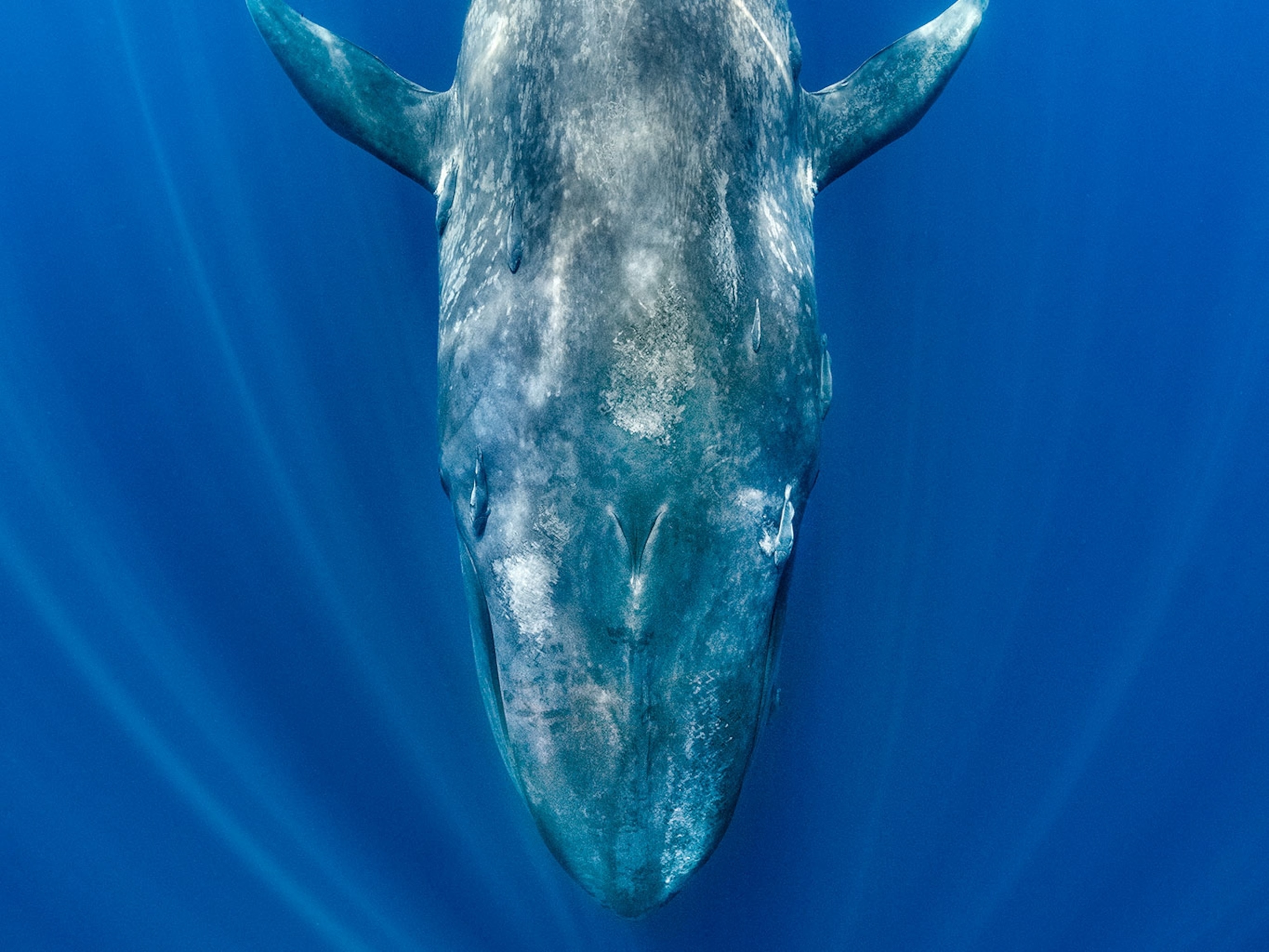Mysterious Blue Whale Behavior Likely Filmed for First Time
Drone footage may have captured a mysterious courtship behavior by the world's largest animal.
Blue whales are the largest animals on Earth, but we know surprisingly little about their complex social interactions—and they've rarely been recorded on camera.
But new footage filmed off the coast of Sri Lanka by pro whale photographer Patrick Dykstra, in conjunction with blue whale independent researcher Howard Martenstyn, claims to be a first. Their video shows what they believe is the first known clip of a blue whale "heat run" but has drawn criticism from established blue whale researchers.
Heat runs have been well documented in humpback whales, but no known footage exists of the behavior in blue whales (or at least that Dykstra or National Geographic could find).
A BBC Earth clip from 2009 shows a heat run among humpback whales, describing the behavior as "violent enough to kill." Several males swimming at high speeds duke it out to be the one to mate with one large female.
In a 2014 interview with Scientific American, photographer Darren Jew described what it was like to photograph the violent escapade: "The conflicts can be quite brutal, with whales ramming each other, pounding each other with their tail flukes, even breaching out of the water and landing on top of each other."
Is this actually a heat run?
The video from Dykstra and Martenstyn shows what they believe is a single male blue whale in pursuit of a female. Blue whales are sexually dimorphic, which means that females and males have noticeable physical characteristics. Females tend to be larger than males.
"This female is rolling over on her side and flipping upside down; it's definitely not normal blue whale behavior," said Dykstra. "It's being done to entice or react to the male behind her. As far as we know it's never been filmed before."
He and a crew of researchers from Sri Lanka captured the footage last March. They watched the pair of whales for several days throughout the month. When asked if he saw the interaction culminate in mating, Dykstra noted disappointedly that he had not. He claimed to have seen them interacting for hours during the day but wasn't able to see if the behaviors ended in mating, because the research crew was forced to return to their base at dark.
Most of the time, blue whales spend the majority of their day eating. The enormous animals weigh as much as 200 tons and feed only on tiny krill, which means hours of their time is devoted to feeding.
"To see them doing anything but the most efficient means of catching food, expending so much energy, is just such a rare thing," said Dykstra.
But other blue whale experts aren't quite so sure.
"It is a lot of assumption to think this is sexual courting," said Leigh Torres, a National Geographic explorer and marine ecologist with Oregon State's Marine Mammal Institute. After watching the footage, she explained that blue whales have been seen traveling in pairs and sometimes exhibit "racing" behavior that her team has at times confused with males competing for a female.
"This is not footage of a heat run," said Asha de Vos, a noted blue whale researcher in Sri Lanka and National Geographic Explorer. "We often see courtship in the form of ménage-a-trois behaviors and they are high energy events that involve high speed chases, with whales charging and heads breaching the surface. This footage is of two whales swimming together and this is by no means an uncommon sight. Oftentimes we don’t even know if they are male female pairs because it is difficult to decipher gender from the surface."
Understanding Blue Whale Behavior
For an animal that weighs 200 tons, grows longer than a bus, and lives for up to 90 years, you'd think it would be relatively easy to observe their most basic behaviors like mating and migration. But there's a lot we don't know about these animals.
A big reason for why we know so little has to do with the whaling boom that swept through oceans during the early 20th century. Blue whales were one of the hardest hit species and were almost hunted to extinction. While the species is now internationally protected by the International Whaling Commission, their numbers have been slow to rebound, in large part because blue whales reproduce slowly and infrequently.
"It's interesting what we know about blue whales, but it's so much more interesting what we don't know," said Dykstra. He and Martenstyn are at the vanguard of blue whale research in Sri Lanka, he said. A brutal civil war on the island nation ended only in 2009, and their work has only begun in earnest in the past several years. (Learn more about how Sri Lanka is attempting to maintain its fragile peace.)
Blue whales are characteristically much shyer than humpbacks and tend to avoid contact from unknown sources.
Video was captured using a drone, which the National Oceanic and Atmospheric Administration cautions should be no closer than 300 yards to marine mammals.





